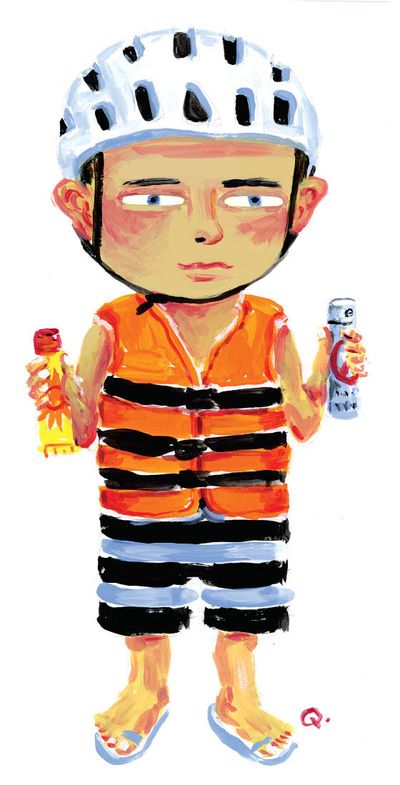Summer checklist: Fun in the sun just requires a few reminders

Despite a water-logged spring, the first day of summer on Tuesday ushers in an abundance of outdoor activities – and perhaps – warmer temperatures.
Many Inland Northwest residents look forward to more hikes, camping, water recreation and other seasonal activities. In that eagerness to enjoy the outdoors, think about preparations now to guard your health while in the sun, so that problems don’t spoil your outings.
Here are some summer checklist items to pack along:
Splash wisely
If you’re on a boat, paddleboard, kayak or canoe, don’t forget to wear a life jacket. If kids are swimming in a shallow area, an adult should be designated to watch from the shore or poolside.
People might underestimate how cold the region’s rivers and lakes are, and then accidentally fall into the water. Someone going overboard or falling in can experience a cold-water shock and a life jacket keeps that person’s head above water.
Paddleboard use has soared, and state agencies urge people to wear a life jacket, carry a whistle and use a leash attached to the board.
Be helmet-ready
For many summer activities, it’s recommended to wear a helmet, including skateboarding, cycling, horseback riding or riding an ATV.
Bike helmets can reduce the risk of head injuries by as much as 85% and brain injuries by as much as 88%, according to the Spokane Community Oriented Policing Services. Ensure it fits properly.
Spokane COPS provides tips to wearing a helmet correctly:
• Look for a safety certification sticker inside. All bicycle helmets manufactured after 1999 must meet the U.S. Consumer Product Safety Commission bicycle helmet standard. Another one to look for is Snell-certified, designed to work well in managing severe impact shock in only one accident.
• Check a helmet for proper sizing. Find a child a new helmet if they’ve outgrown one, or within five years, whichever comes first. If needed, use extra pads for a snug and secure fit. The straps should fit around your ear and under your chin snugly. The straps should form a “V” under your ears, with have enough room for one finger to fit between your chin and the strap. The helmet should rest flat on your head, low on the forehead and no more than two finger widths above the eyebrows.
Stay hydrated
In the heat, sweat evaporates off skin, which allows for heat loss and cooling, says the Centers for Disease Control and Prevention. However, when we sweat, we also lose water and electrolytes, or “salts,” such as sodium chloride and potassium chloride. Drinking enough water is necessary for our bodies to function properly and avoid heat illness.
If doing moderate activities outdoors during higher temperatures, you should drink one cup of water every 15 to 20 minutes, according to the CDC. Water intake should be frequent before you become thirsty to maintain good hydration. Regular meals and salt-containing snacks are enough usually to replace electrolytes lost during sweating.
Use sunscreen
Sunscreen can help prevent skin cancer by protecting you from the sun’s harmful ultraviolet rays, the American Academy of Dermatology says. The association also warns that anyone can get skin cancer, regardless of age, gender or race. It is estimated that one in five Americans will develop skin cancer in their lifetime.
The American Academy of Dermatology recommends water-resistant sunscreen with a sun protection factor of 30 or higher. Even on cloudy days, up to 80% of the sun’s harmful ultraviolet rays can penetrate the clouds, the group says. Apply sunscreen to dry skin 15 minutes before going outdoors.
Other protection can come from SPF clothing and wide-brimmed hats, but don’t forget to wear sunglasses.
Guard against ticks
If you’re hiking or playing in natural areas, one defense against tick bites is to arm yourself with awareness. Ticks usually hide in grassy, brushy or wooded areas with legs outstretched, waiting for a host to brush up against it.
Wear closed-toed shoes and light-colored clothing so you can see ticks easier. Tuck pant legs into socks to prevent ticks from finding your ankles and consider using a tick repellent on exposed skin and clothing according to label directions. Many insect repellents are also effective against ticks. The Environmental Protection Agency’s webpage, “Find the Repellent that is Right for You,” can help you select one that also might work as a mosquito repellent.
When you return from an outing, closely scrutinize your clothes, hair and skin for ticks. Check pets, as well, if your dogs went along. If bitten, use tweezers to grasp the tick as close to the skin as possible. Remove with a steady, even pressure, then clean the area with soap and water. If symptoms develop, it’s vital to seek medical care.